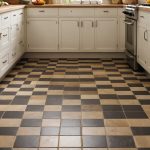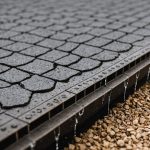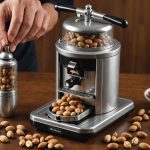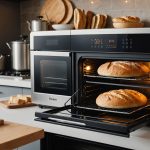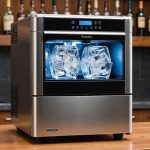Water spots and mineral buildup can be frustrating issues for any kitchen. Selecting the right material for draining boards can make a significant difference in maintaining cleanliness and functionality. From stainless steel to bamboo, each option offers unique benefits. This guide uncovers the top materials, helping you choose the best fit for your needs while eliminating those pesky water stains. Say goodbye to constant scrubbing and hello to a more efficient kitchen experience!
Overview of Draining Board Materials
Choosing the right material is essential for kitchen cleanliness and maintenance.
Additional reading : Essential Nutcracker Features for Effortlessly Cracking Both Small and Large Nuts
Importance of Material Selection
Selecting the appropriate draining board materials is crucial for maintaining a clean and hygienic kitchen environment. The right choice can significantly reduce mineral buildup, which often leads to unsightly stains and potential health hazards. Different materials offer varying levels of durability and ease of cleaning, impacting the overall kitchen hygiene.
Common Materials Used
Here is a list of common draining board materials:
Also to read : Finding the Perfect Ice Maker for Your Home Bar: A Guide to the Best Options
- Stainless Steel: Known for its durability and resistance to rust, it is easy to clean and minimizes mineral buildup.
- Plastic: Lightweight and affordable, but may require more frequent cleaning to prevent stains.
- Ceramic: Offers an aesthetic appeal but can be prone to chipping and requires careful maintenance.
- Bamboo: Eco-friendly and resistant to water damage, though it might need regular treatment to maintain its quality.
Impact on Kitchen Hygiene
The choice of draining board materials directly affects kitchen upkeep. Materials like stainless steel and bamboo are less prone to harbor bacteria, thus promoting better kitchen cleanliness. They are easier to maintain, reducing the frequency of deep cleaning sessions. This not only saves time but also ensures a healthier cooking environment.
Top Recommended Materials for Draining Boards
Choosing the best materials for draining boards is essential for preventing water spots and mineral buildup.
Stainless Steel
Stainless steel is highly recommended due to its durability and resistance to staining. This material is less prone to mineral buildup, making it a top choice for those prioritizing kitchen hygiene.
Maintenance Tips:
- Regularly wipe with a soft cloth to maintain its shine.
- Use a mixture of baking soda and water for stubborn stains.
Comparison:
- Unlike plastic, stainless steel does not discolor over time.
- More durable than ceramic, which can chip easily.
Bamboo
Bamboo is an eco-friendly option with natural antibacterial properties, making it ideal for water spot prevention. However, it requires specific care to avoid water damage.
Care Instructions:
- Regularly apply mineral oil to maintain its condition.
- Avoid prolonged exposure to water for longevity.
Limitations:
- Less durable compared to synthetic materials like plastic.
Plastic
Plastic draining boards are known for their affordability and variety of designs. They resist stains effectively but may not match the durability of stainless steel.
Advantages:
- Lightweight and easy to move.
- Available in numerous colors and styles.
Potential Downsides:
- Prone to scratches and may require frequent replacement.
In summary, selecting the right material involves balancing durability, maintenance, and aesthetic preferences.
Pros and Cons of Each Material
Evaluating the advantages and disadvantages helps in choosing the right draining board material.
Stainless Steel
Advantages: Stainless steel offers exceptional durability and is highly resistant to rust and stains. Its low maintenance needs make it a preferred choice for busy households.
Disadvantages: Despite its benefits, stainless steel can show water spots and fingerprints, requiring regular cleaning to maintain its appearance.
Bamboo
Advantages: Bamboo is an eco-friendly option with natural antibacterial properties, ideal for those seeking sustainable solutions. Its aesthetic appeal adds a warm touch to kitchen décor.
Disadvantages: Bamboo can be less durable than other materials, needing regular maintenance such as mineral oil application to prevent water damage.
Plastic
Advantages: Plastic draining boards are affordable and come in a wide range of designs and colors, making them versatile for various kitchen styles.
Disadvantages: They are prone to scratches and may discolor over time, leading to frequent replacements.
Expert Opinions: Experts recommend considering usage habits when selecting materials. For instance, stainless steel suits high-traffic kitchens, while bamboo is better for those valuing sustainability. Plastic is ideal for budget-conscious consumers.
Maintenance Challenges: Each material presents unique maintenance challenges. Regular cleaning and specific care routines are essential to prolong the lifespan and maintain the quality of the chosen material.
Addressing Water Spots and Mineral Buildup
Tackling common kitchen maintenance challenges effectively.
Causes of Water Spots and Mineral Buildup
Water spots and mineral buildup are common issues on draining boards, often caused by hard water. Hard water contains high levels of minerals like calcium and magnesium, which leave residues as water evaporates. These spots can tarnish the appearance of your kitchen surfaces and, if left unattended, may lead to more stubborn stains.
Effective Cleaning Solutions and Prevention Tips
To combat water spots and mineral buildup, regular cleaning is crucial. Use a mixture of vinegar and water to dissolve mineral deposits. For tougher stains, baking soda can be an effective abrasive. Ensure that you dry the surface thoroughly after cleaning to prevent new spots from forming.
Prevention Tips:
- Regularly wipe down surfaces after use.
- Use a water softener to reduce mineral content.
Recommended Maintenance Routines
Different materials require specific maintenance routines to prevent water spots and mineral buildup. Stainless steel benefits from regular polishing, while bamboo needs periodic oiling. Plastic surfaces should be cleaned frequently to avoid discoloration.
Maintenance Routine:
| Material | Routine |
|---|---|
| Stainless Steel | Polish regularly |
| Bamboo | Apply mineral oil |
| Plastic | Clean frequently |
Adhering to these routines will ensure your kitchen remains spotless and hygienic.
Expert Tips for Maintaining a Clean Draining Board
Enhance your kitchen's cleanliness with practical and effective strategies.
Daily Cleaning Practices
Maintaining a clean draining board starts with daily cleaning routines. For stainless steel boards, wipe them down with a soft cloth after each use to prevent water spots. Use a mild detergent for plastic boards, ensuring the surface is free from scratches. For bamboo, a gentle wipe with a damp cloth suffices, avoiding excessive moisture.
Long-term Maintenance Strategies
To extend the life of your draining boards, implement long-term strategies. Stainless steel benefits from regular polishing to maintain its shine. Bamboo requires periodic application of mineral oil to prevent drying and cracking. Plastic boards, though affordable, need frequent inspection for wear and tear, replacing them as necessary to maintain hygiene.
Recommended Maintenance Routine:
| Material | Daily Practice | Long-term Strategy |
|---|---|---|
| Stainless Steel | Wipe with a soft cloth | Regular polishing |
| Bamboo | Gentle wipe with a damp cloth | Apply mineral oil periodically |
| Plastic | Clean with mild detergent | Replace when worn out |
Recommended Products for Effective Cleaning
Choosing the right products can enhance cleaning efficiency. For stainless steel, a mixture of baking soda and water can remove tough stains. Vinegar solutions work well on plastic to prevent discoloration. For bamboo, natural oils ensure longevity and maintain its appearance. Regular use of these products will keep your draining board in pristine condition.
Visual Comparisons of Draining Board Materials
Using visual aids can simplify the decision-making process.
Importance of Visual Aids
Visual aids play a crucial role in helping consumers understand the differences between various draining board materials. They provide a clear, side-by-side comparison that highlights key attributes such as durability, maintenance requirements, and aesthetic appeal. By presenting information visually, consumers can quickly grasp the pros and cons of each material, making it easier to select the most suitable option for their needs.
Examples of Comparison Charts
Comparison charts are effective tools for evaluating draining board materials. These charts typically include criteria like maintenance ease, cost, and environmental impact. For instance, a chart might show that stainless steel excels in durability, while bamboo scores high on eco-friendliness. Such visuals help in assessing which material aligns best with personal preferences.
Example Comparison Chart:
| Material | Durability | Maintenance | Eco-friendliness |
|---|---|---|---|
| Stainless Steel | High | Low | Moderate |
| Bamboo | Moderate | Moderate | High |
| Plastic | Low | High | Low |
Making Informed Decisions
Utilizing visual aids allows consumers to make informed decisions when selecting draining board materials. By comparing attributes like durability and maintenance, consumers can choose a material that best fits their lifestyle and kitchen requirements.





